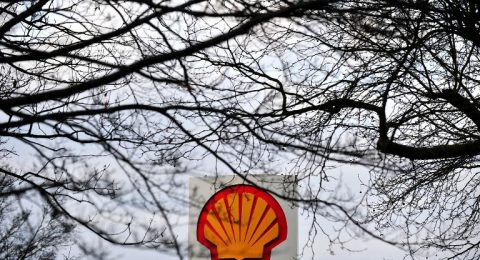Shell has announced changes to its 2030 carbon reduction target and scrapped a 2035 objective, citing lower power sales and increased demand for gas in the energy transition, committing to achieving net zero emissions by 2050.
These changes are a key part of CEO Wael Sawan’s strategy to focus on higher-margin projects, maintain steady oil output, and increase production of natural gas in order to improve returns.
In its annual update on its energy transition strategy on Thursday, Shell stated that it will now aim for a 15-20% reduction in net carbon intensity of its energy products by 2030, compared to 2016 levels. This is a decrease from its previous target of a 20% cut.
By measuring emissions by intensity, a company can technically increase its fossil fuel output and overall emissions while using offsets or adding renewable energy or biofuels to its product mix.
Shell also emphasized the importance of gas, particularly liquefied natural gas, in the energy transition as it replaces more polluting carbon in power plants. However, the company also expects its power sales, which include renewable power, to be lower than previously forecast.
As a result, Shell has retired its previous target to reduce its carbon intensity by 45% by 2035. The company stated, “In line with this shift to prioritizing value over volume in power, we will focus on select markets and segments. This includes selling more power to commercial customers and less to retail customers. Given this focus on value, we expect lower total growth of power sales to 2030, which has led to an update to our net carbon intensity target.”
Moreover, Shell has introduced a new “ambition” to reduce overall emissions from oil products, such as gasoline and jet fuel, sold to customers by 15-20% by 2030 compared to 2021 levels.
As part of its strategy, Shell has already begun company-wide staff reductions, including in its low-carbon solutions division, in an effort to save up to $3 billion.
The company has also sold its European power trading business, exited offshore wind and low-carbon projects, put US solar assets up for sale, and placed its giant refining and petrochemical complex in Singapore under review. It has also announced plans to shut down a refinery in Germany and exit Nigeria’s troubled onshore oil operations.
These actions have sparked speculation that Sawan is slowing Shell’s plans to reduce greenhouse gas emissions and shift to renewables, angering climate-focused investors. In January, a group of 27 investors who own around 5% of Shell’s shares co-filed an independent resolution urging the energy company to set tighter climate targets, making it the largest such drive to date.
Despite these changes, Shell reported a net profit of $28 billion in 2023, driven by strong liquefied natural gas and oil sales. However, this was still a 30% decrease from the previous year’s record earnings.
Shell also stated that it invested $5.6 billion in 2023 in low-carbon and renewable businesses, which accounted for 23% of its total annual spending. This is an increase from $4.3 billion, or 17%, in the previous year.








